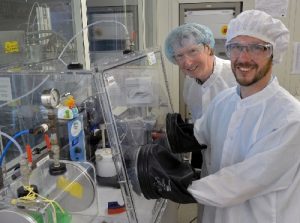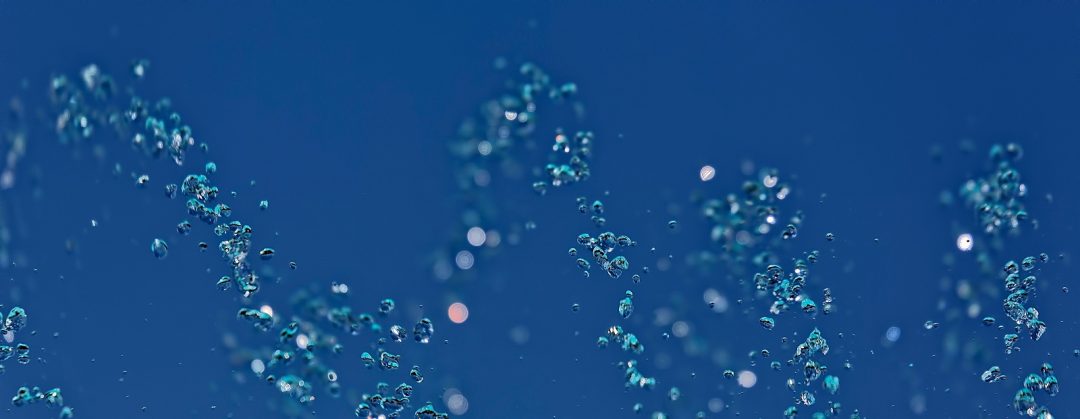The idea to generate hydrogen with the help of electrolysis is more than 200 years old. The idea to use hydrogen generation for the purpose of energy storage and thus to contribute to the energy transition is also not new. But there is a reason why splitting water into hydrogen and oxygen has not yet played a major part in the energy transition as yet: Electrolysis is itself energy intensive, and the materials which are used in the production of conventional electrodes are expensive. Platinum and iridium, for example, belong to the most expensive materials worldwide.
Today, there are approaches using other materials, and first trials are being conducted using oxid forms of iron and nickel. One of such approaches is followed by Christoph Bäumer from the Department of Materials in Electrical Engineering II at RWTH Aachen University. In his research project, he builds on the understanding and modification of catalyst surfaces: that’s where the decisive reaction for the generation of hydrogen takes place. “But it has not been sufficiently defined as yet,” says Bäumer.
Now there is good cause to hope that cost-efficient and efficient catalysts from materials that are widely available can be developed. For this reason, Christoph Bäumer will now receive an Individual Global Fellowship within the Marie Skłodowska Curie Action program. As a Marie Curie fellow, he will conduct initial experiments at both his home department and at the Department for Material Science and Engineering at Stanford University.
In addition, he will contribute to the research activities at the Peter Grünberg Institute for Electronic Materials. Here, Bäumer will investigate atomically defined catalyst layers during the electrolysis process. “We want to understand how to develop a material which is both active and stable. So far, we had to choose between the one and the other.”

Christoph Bäumer investigates catalyst surfaces to improve electrolysis. Now he has received a Marie Curie Fellowship from the European Union. Photo: Andreas Schmitter
The first experiments are now under way in the Aachen institute’s clean room. Christoph Bäumer will spend a lot of time in the research labs in Aachen, Stanford, and Jülich, seeking to achieve his central research goal: “I want to build a more fundamental understanding of the processes of splitting water.” Based on his insights, it may become possible to adjust the composition of the material in such a way that it remains as active and stable as possible, thus making hydrogen a decisive factor in the transition to renewable energy.














